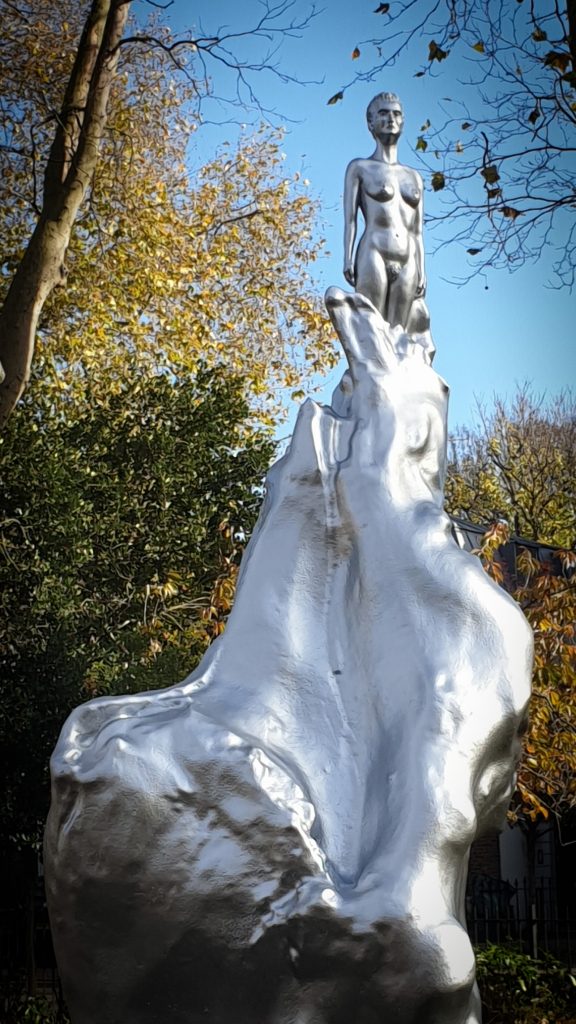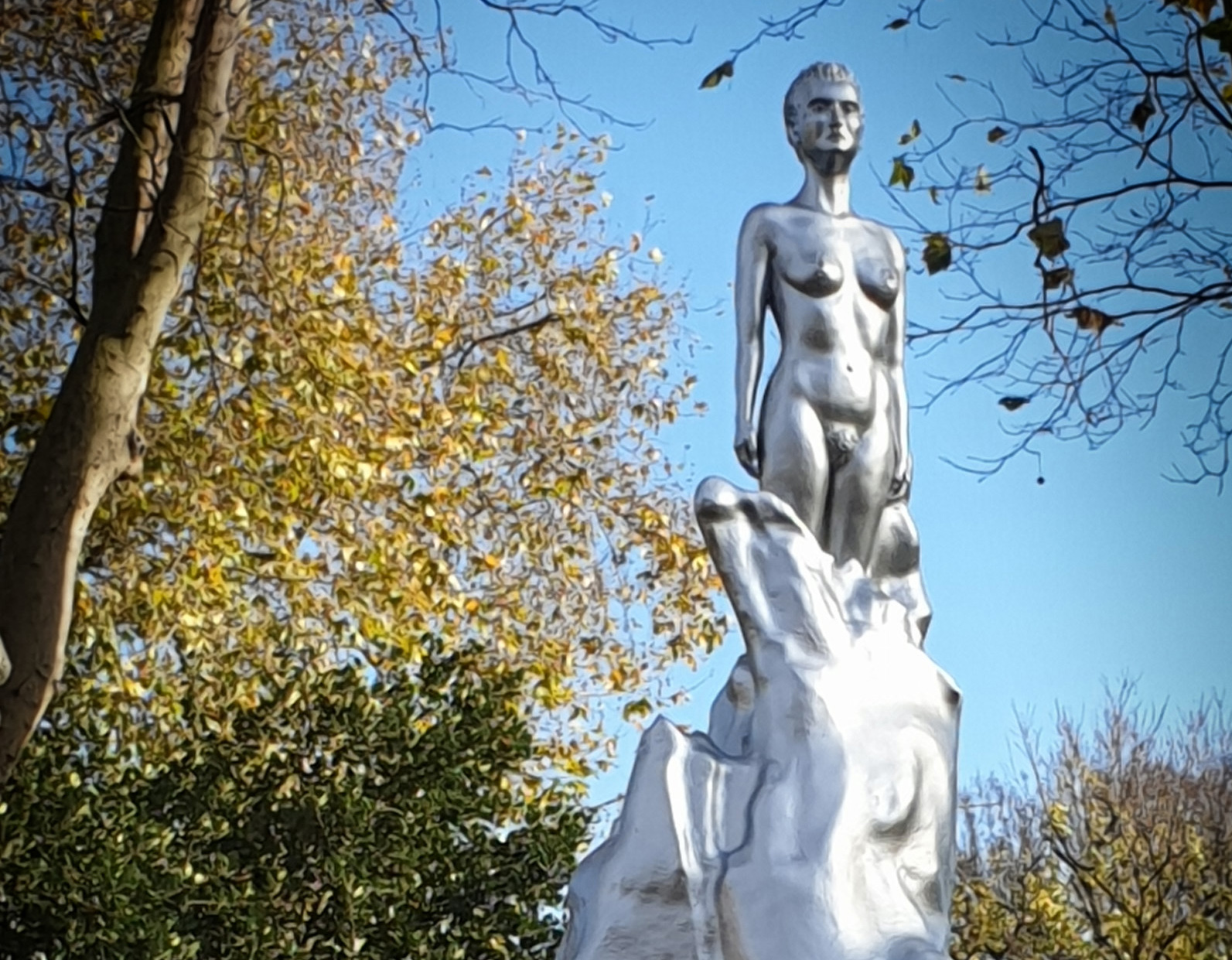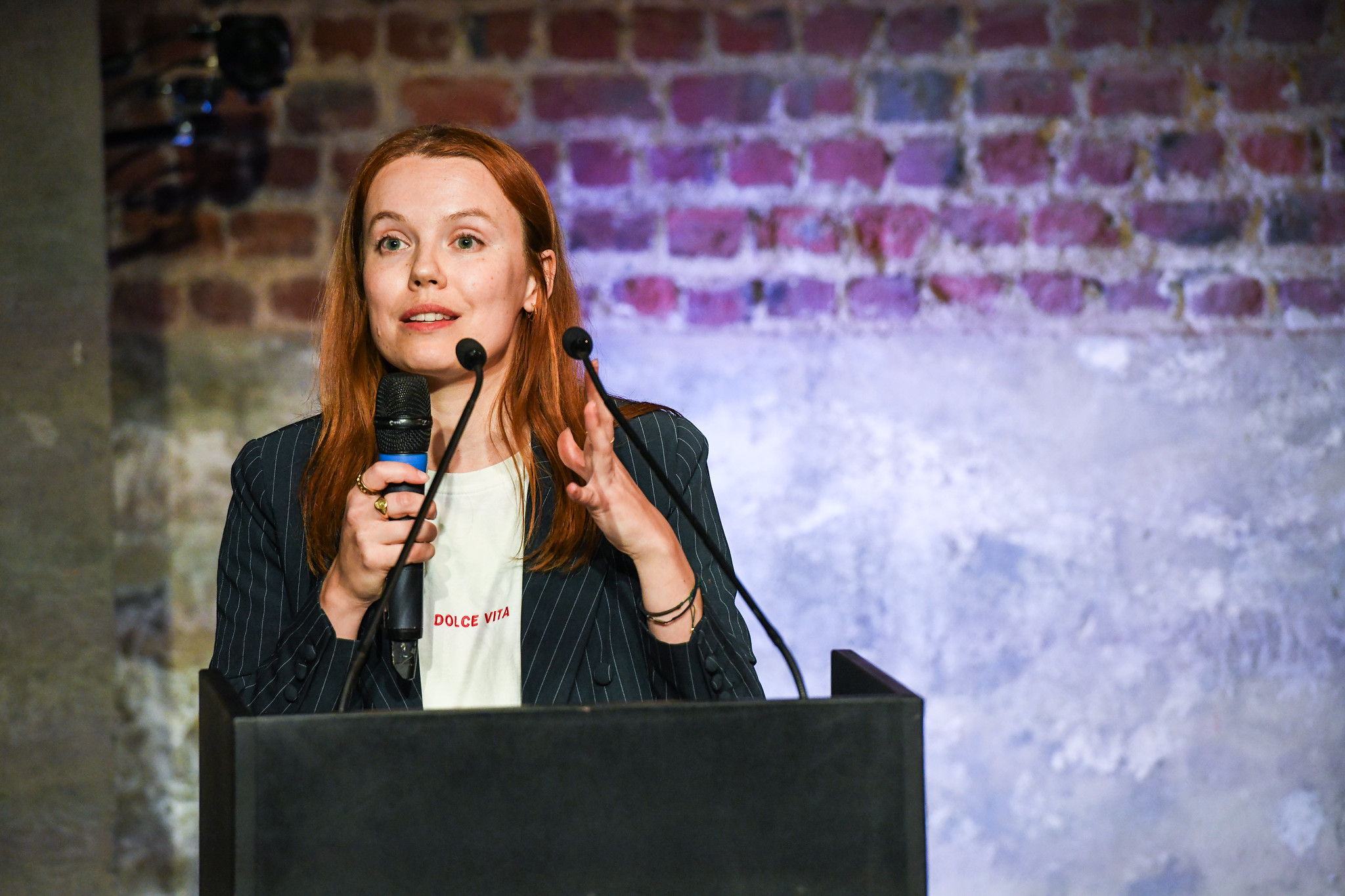[vc_row][vc_column][vc_column_text]

Maggi Hambling’s Statue for Mary Wollstonecraft, photo: Grim23, CC BY-SA 4.0
What would Mary Wollstonecraft have thought? The 18th century feminist, author of A Vindication of the Rights of Woman, has been commemorated with a new sculpture that includes the figure of a small, naked woman. The woman is not, according to artist Maggi Hambling, Wollstonecraft herself, but a timeless everywoman. Indeed, the work is A Sculpture for Mary Wollstonecraft rather than of her.
The reaction has been swift and almost unilaterally negative. Feminist authors who stand on Wollstonecraft’s shoulders have taken to Twitter to express their views to defend the oft- labelled “mother of feminism”. Imogen Hermes Gower said a chance to break with convention has been missed and Tracy King called the piece a “shocking waste of an opportunity”. Caitlin Moran sarcastically tweeted that she expects the streets to be full of statues depicting “John Locke’s shiny testicles, Nelson Mandela’s proud penis, and Descartes’ adorable arse”.
Meanwhile, Dianne Abbot MP tweeted: “Pleased to see the great feminist #MaryWollstonecraft honoured after 200 years. And it is in a lovely garden square in Stoke Newington. But what a disappointing statue. Tiny, shiny and completely inappropriate”.
Valid opinions, all. Debate around art is arguably what abstract artistic endeavour is all about. It is a form of expression as valid as the works themselves.
Where a line must be drawn is censorship.
Just a day after the sculpture appeared in North London, clothing, tape and facemasks had been used to cover up the female figure, who sits atop a large, amorphous silver mass like a star at the top of a Christmas tree. These efforts at censorship have since been removed, but they pose an interesting question: why does female nakedness, especially in conjunction with honouring feminist ideals, inspire a desire to censor?
My own thoughts on the reason the statue is controverial came quickly: female nakedness is linked with sexual objectification, and the idea that women do not exist in the world purely as sexual objects for male pleasure is a key tenet of feminism. The two are not happy bedfellows and their collision in this sculpture is at the root of the displeasure of its critics.
But this thought process seemed a little too easy. The truth is that the link between sexual objectification and nakedness, in art as in life, is not a truth universally acknowledged. It is not unbreakable; it is not unchallengeable. It is a construct of the patriarchy, and to censor the naked female form in art is to play into the hands of those who want to preserve the idea of women exclusively as sexual beings.
Caroline Banks, an artist who has written a blog about the sculpture, says that women should own their own nakedness: “There is an argument for reappropriation of that [sexual objectification]. Why should we be ashamed of our bodies because every time we have no clothes on we think we’re going to be looked at as a sexual creature, or not [if you’re not fertile]?”
She also explored how loaded the term “nudity” is. Several news outlets have referred to the sculpture as “nude”.
“That woman is naked,” Banks says, “she’s not nude”.
She explains: “That’s where the male gaze comes in a lot of the time. The idea of the nude in art is different from being naked. If you’re naked you just haven’t got any clothes on. Babies are not nude. People on the mortuary slab are not nude. They’re naked, they’re not nude.”
This idea of being naked as opposed to being nude, and the censorship of nakedness when it is loaded with the implications attached to nudity, is something that has also been explored in relation to the public exposure of female nipples.
Head of content at Index, Jemimah Steinfeld, wrote about this form of censorship in 2017. This was the year a case was taken the US Supreme Court by a woman named Sonoko Tagami, who was suing the city of Chicago over a fine she received for exposing her nipples in public, arguing that it is sex-based discrimination; men are not fined for the same action.
Censorship of female nipples on social media is also the source of debate and feelings of discrimination; Instagram continues to enforce a ban on female nipples, a topic covered in depth by The New York Times. The implication seems clear that female anatomy is sexual and therefore needs to be censored. The idea of parts of a woman’s body being exposed for reasons other than to sate the male gaze seems to have escaped the censors.
And back, then, to A Sculpture for Mary Wollstonecraft.
It is a work of art, the majority of which is a roiling silver mass from which the naked figure emerges. The figure’s nakedness appears at odds with feminist values.
But the sculpture’s would-be censors have it wrong. Covering its nakedness merely upholds and strengthens its sexual objectification.[/vc_column_text][/vc_column][/vc_row][vc_row][vc_column][three_column_post title=”You may also want to read” category_id=”15469″][/vc_column][/vc_row]





